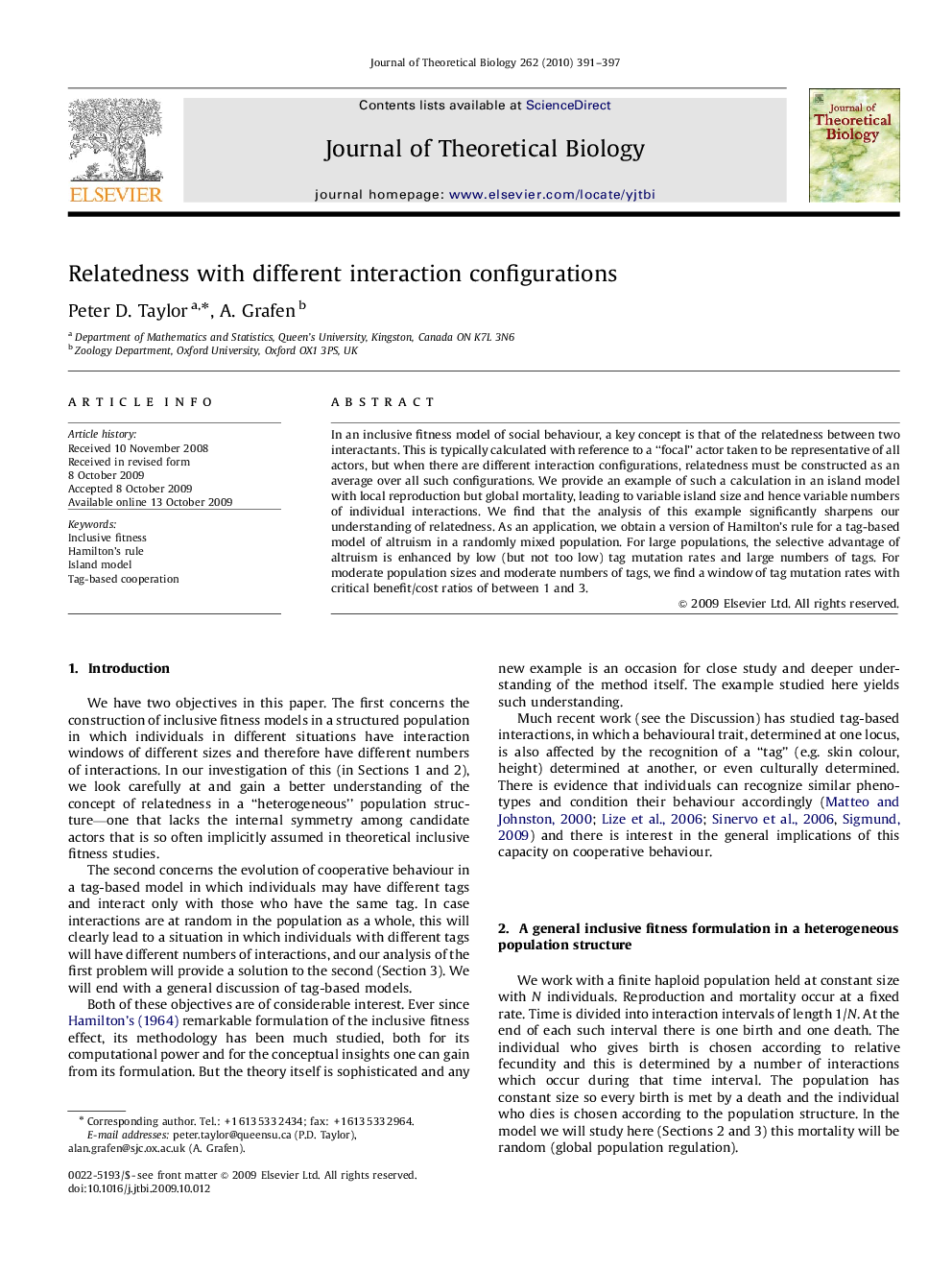| Article ID | Journal | Published Year | Pages | File Type |
|---|---|---|---|---|
| 4497588 | Journal of Theoretical Biology | 2010 | 7 Pages |
In an inclusive fitness model of social behaviour, a key concept is that of the relatedness between two interactants. This is typically calculated with reference to a “focal” actor taken to be representative of all actors, but when there are different interaction configurations, relatedness must be constructed as an average over all such configurations. We provide an example of such a calculation in an island model with local reproduction but global mortality, leading to variable island size and hence variable numbers of individual interactions. We find that the analysis of this example significantly sharpens our understanding of relatedness. As an application, we obtain a version of Hamilton's rule for a tag-based model of altruism in a randomly mixed population. For large populations, the selective advantage of altruism is enhanced by low (but not too low) tag mutation rates and large numbers of tags. For moderate population sizes and moderate numbers of tags, we find a window of tag mutation rates with critical benefit/cost ratios of between 1 and 3.
